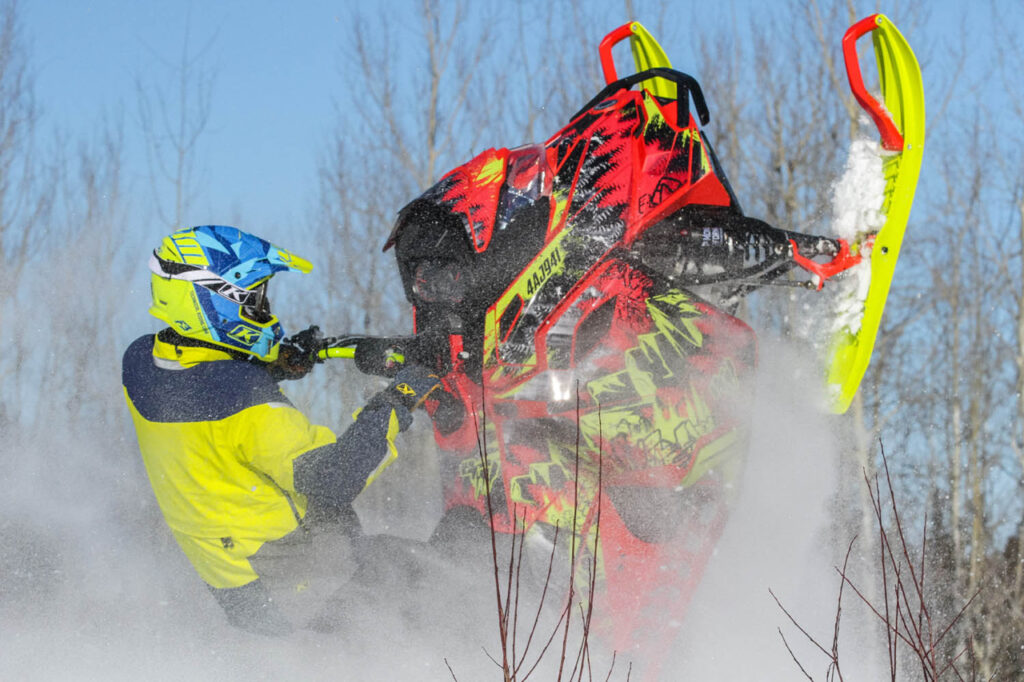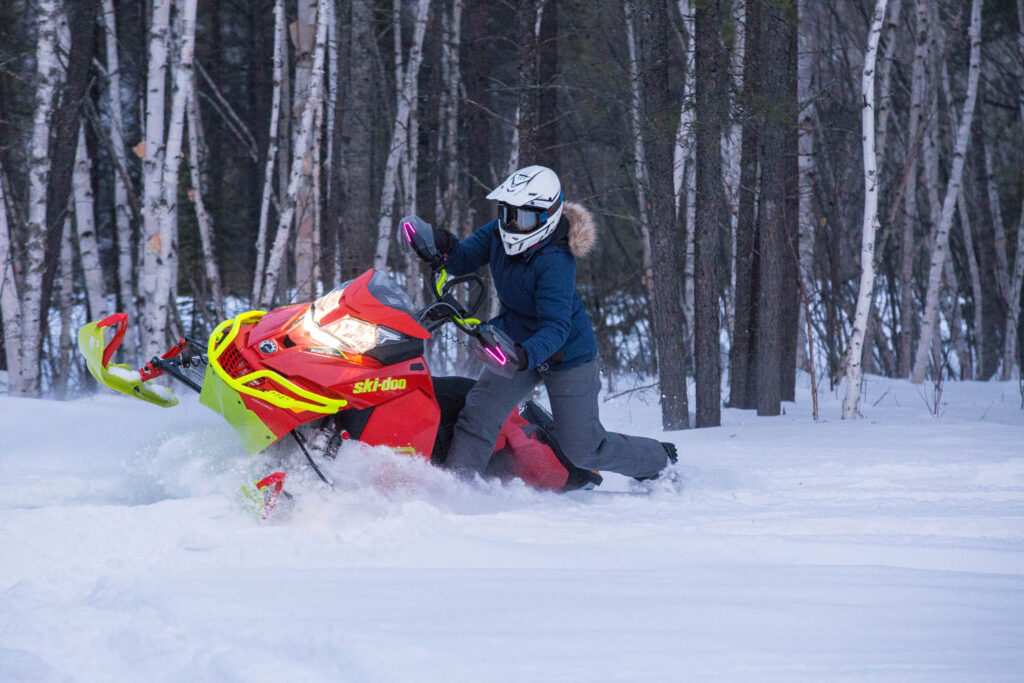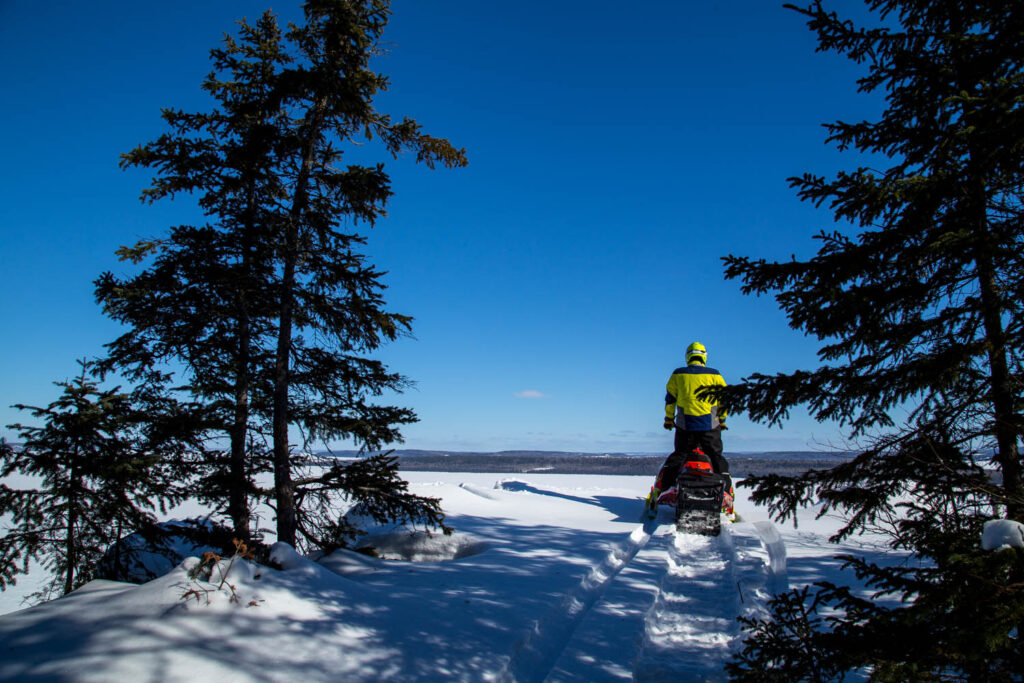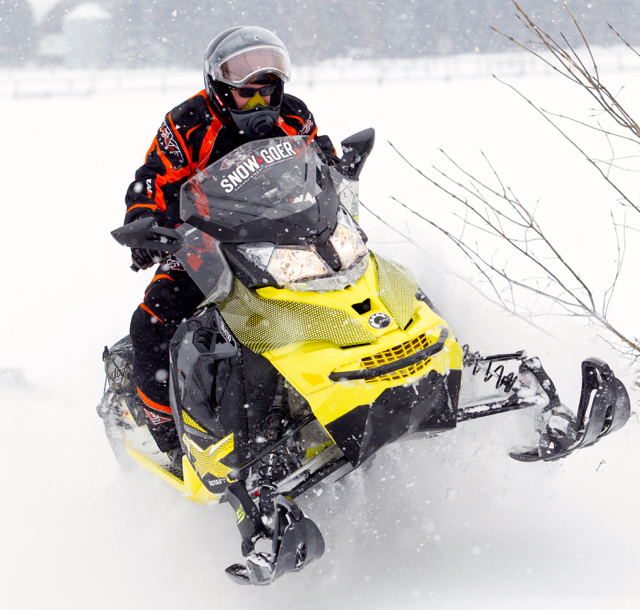How To Get Ready for Backcountry Riding…
Related: Eastern Canada Backcountry Destinations
Backcountry riding is becoming increasingly popular. Especially as crossover and even mountain snow machines become more prevalent. It occurs in an unpredictable, uncontrolled and unmaintained natural environment. Also, on irregular terrain far from local and emergency services.
Each backcountry rider participates at his or her own risk in snowmobiling away from maintained trails. Each must also assume complete responsibility and liability for his or her own snowmobiling decisions, choices and actions. It’s also imperative that each snowmobiler always plans ahead for every ride to be fully prepared for the unexpected.
Tips For Deep Snow Riding
If you’ve never done any deep powder snowmobiling, be aware that’s it’s a whole different style of riding than cruising groomed trails. So backcountry newbies may want to view these basic tips before getting started…
To assist in making smart choices for backcountry riding, the following snowmobile safety list includes valuable advice. Experts highly recommended for each rider to consider in their individual effort to mitigate their own risk while sledding in the backcountry.
Note also that often access to designated backcountry riding areas includes riding on official snowmobile trails. Here, snowmobilers require a valid permit on each sled – and please, when you’re riding on a trail, don’t wander off it into the powder. That’s not what real backcountry riding is about!
Before Going Backcountry Riding…
- Familiarize yourself with road, weather and snow conditions by visiting sites such as Environment Canada, The Weather Network, Accuweather, Coolwx and MTO Winter Road Condition Reports.
- Familiarize yourself with techniques and tools for powder riding and getting unstuck.
- Talk to local riders for information and advice about backcountry riding locations, conditions and what to expect.
- Leave your daily destination plan and return time with a friend or your hotel front desk.
- Wherever possible, arrange for a local guide especially if it’s your first time in the area.
- Fill up all gas tanks before leaving town each day and travel with a small gas can of fuel when possible to help ensure that you don’t run of our fuel while riding.
Make Smart Choices for Backcountry Riding …
- Ensure your snowmobile is designed and capable for backcountry riding and conditions. Consult with your local dealer or snowmobile professional for snowmobile calibration, model advice and pre-ride service.
- Ride with only one person per sled.
- Ride with a group, never alone (minimum of one other able-bodied companion on their own sled).
- Follow 1/3-1/3-1/3 rule: use 1/3 gas to get there, 1/3 for playing, and leave at least 1/3 to get back.
- Watch for markers along the way that you can find again for your return trip (e.g. a large rock, a different type of tree, etc.) These can help you navigate in and out of the riding area.
- Always be aware of your surroundings and remember that deep snow can hide many obstacles that can substantially damage your sled or cause personal injury. Just as a side point though, if you are injured through no fault of your own then you can always use someone like this personal injury lawyer vancouver to help you get the compensation you deserve.
What To Take for Backcountry Riding…
- Enough extra fuel for all sleds.
- A backcountry area print map where available.
- At least one working GPS unit with backcountry area GPS coordinates uploaded and spare batteries.
- Emergency, first aid & survival gear, including towrope and folding shovel, plus extra gloves and under layers, high-energy drinks and snacks.
- A working communications device, such as a SPOT-type unit or satellite phone (there may be no cell service).
- Waterproof snow gear and wicking layers.
Disclaimer: The above may not be a complete or comprehensive list of every consideration for backcountry riding. It is intended only to provide backcountry riders with some common sense guidelines for making their own smart choices and developing a suitable ride plan and preparations for their own safety and security.
Ontario law requires a snowmobile entering an OFSC Prescribed Snowmobile Trail to display a valid Ontario Snowmobile Trail Permit,
Like This Post? Follow Me on Facebook
The tips and advice in this blog are the opinions of the author, may not work in every situation and are intended only for the convenience and interest of the reader, who has the personal responsibility to confirm the validity, accuracy and relevancy of this information prior to putting it to their own use.




